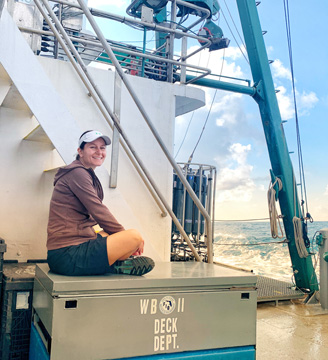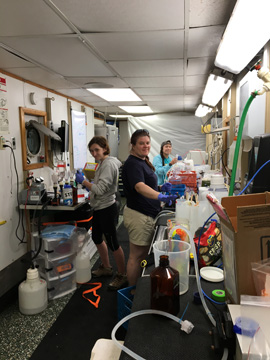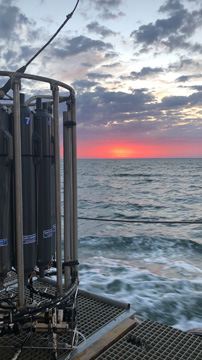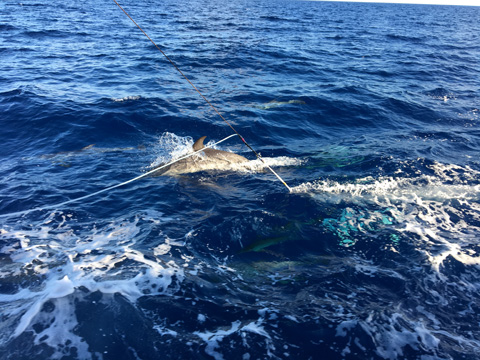RESEARCH: Gulf of Mexico
Current work in the Gulf of Mexico includes using
δ15N budgets to determine the importance of
subsurface NO3- and N2 fixation for
fueling the food web that supports larval bluefin tuna in the Gulf
of Mexico. Other projects seek to determine the source of DON on the
West Florida Shelf, as well as ask whether the isotopic composition of
NO3- that enters the Gulf of Mexico from the
central Atlantic is
modified by inputs from N2 fixation, the Mississippi River and/or submarine groundwater
discharge before returning to the North Atlantic.
West Florida Shelf cruises
I've been working on
samples collected in the
Gulf of Mexico on cruises led by myself, Kristen Buck (USF), and
Dreux Chappell (ODU), together with other colleagues,
to understand relationships between metals,
nitrogen, and the cyanobacterial diazotroph, Trichodesmium spp., on
the West Florida Shelf
 |
 |
 |
|
 |
 |
 |
 |
In April 2019, Dreux Chappell (ODU), Angie Knapp (FSU), Corday
Selden (ODU), Casey Nickel (USF), Salvo Caprara (USF), Shannon Burns
(USF), Rachel Thomas (FSU), Brooke Barber (FSU), and Zhou Liang
(FSU) went to the Gulf of Mexico to investigate carbon, nitrogen,
and trace metal cycling on the R/V Weatherbird II. |
Publications
Howe, S., C. Miranda, C. Hayes, R. Letscher, and A.N. Knapp,
2020, The dual isotopic composition of nitrate in the Gulf of Meixco
and Florida Straits, 125, e2020JC016047, Journal of Geophysical Research-Oceans, doi:10.1029/2020JC016047
Redalje, D., J. Ammerman, J. Herrera, A.N. Knapp, D. Valdes, and
A. Hayward, 2019, Nutrients in the Gulf of Mexico:
Distributions, Cycles, Sources, Sinks, and Processes. In: The
Chemical Oceanography of the Gulf of Mexico, Thomas Bianchi,
Editor. Texas A&M Press.
This personal Web page is not an official Florida State University
Web page.






